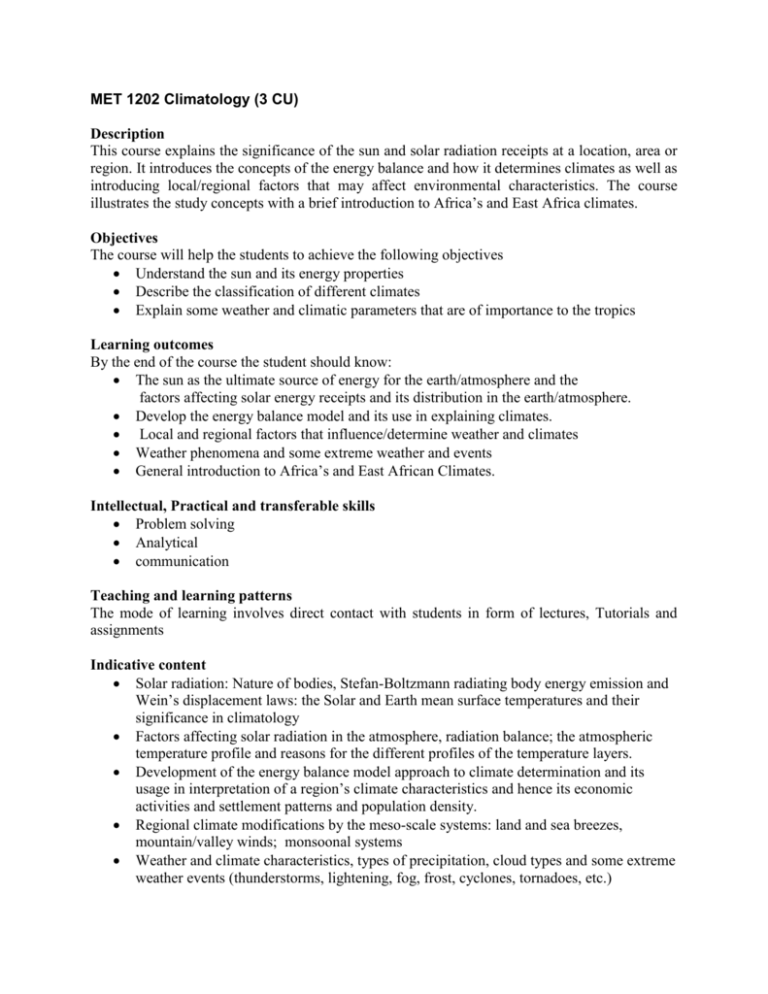MET 1202 Climatology
advertisement

MET 1202 Climatology (3 CU) Description This course explains the significance of the sun and solar radiation receipts at a location, area or region. It introduces the concepts of the energy balance and how it determines climates as well as introducing local/regional factors that may affect environmental characteristics. The course illustrates the study concepts with a brief introduction to Africa’s and East Africa climates. Objectives The course will help the students to achieve the following objectives Understand the sun and its energy properties Describe the classification of different climates Explain some weather and climatic parameters that are of importance to the tropics Learning outcomes By the end of the course the student should know: The sun as the ultimate source of energy for the earth/atmosphere and the factors affecting solar energy receipts and its distribution in the earth/atmosphere. Develop the energy balance model and its use in explaining climates. Local and regional factors that influence/determine weather and climates Weather phenomena and some extreme weather and events General introduction to Africa’s and East African Climates. Intellectual, Practical and transferable skills Problem solving Analytical communication Teaching and learning patterns The mode of learning involves direct contact with students in form of lectures, Tutorials and assignments Indicative content Solar radiation: Nature of bodies, Stefan-Boltzmann radiating body energy emission and Wein’s displacement laws: the Solar and Earth mean surface temperatures and their significance in climatology Factors affecting solar radiation in the atmosphere, radiation balance; the atmospheric temperature profile and reasons for the different profiles of the temperature layers. Development of the energy balance model approach to climate determination and its usage in interpretation of a region’s climate characteristics and hence its economic activities and settlement patterns and population density. Regional climate modifications by the meso-scale systems: land and sea breezes, mountain/valley winds; monsoonal systems Weather and climate characteristics, types of precipitation, cloud types and some extreme weather events (thunderstorms, lightening, fog, frost, cyclones, tornadoes, etc.) General climatology of Africa. and Climatology of East Africa Assessment Method The assessment method is structured to include course work, and final examination. Course work consists of assignments, reports and tests and accounts for 30% of the final grade. The final examination will account for 70% of the final grading Core Reference materials Roger G. Barry and Richard J. Chorley: (1987) Atmosphere, Weather and Climate, 5th edition, Methuen & co. Colin Buckle (1996): Weather and Climate in Africa, Longman publish











